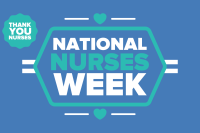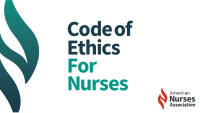I’m excited to see the focus on professionalism that will be featured in this and upcoming issues of American Nurse Today. You’ll see articles written by a team that includes Gerald B. Hickson, MD, one of the world’s leading experts on disruptive behavior and its connection to clinical outcomes and medical malpractice. He’s a valued colleague who has taught me insightful lessons about this topic and provided me with the tools to address it. One of those tools is the Promoting Professionalism Pyramid, which is used to address unprofessional conduct and help us match circumstances with the appropriate level of intervention. Dr. Hickson taught me the strategy back in 2010 on a TV broadcast we did together (a humbling experience), and I’ve used it ever since.
The pyramid is based on the concept that most team members are outstanding and rarely demonstrate disruptive behavior. But when that behavior occurs, the pyramid model can help us distinguish a single incident from a pattern and ultimately guide us in the appropriate interventions.
Disruptive behavior is still a regular topic in articles and at conferences even though the issue has been around for years. Why? What is the disconnect between information and practice? Maybe we need to take a different approach.
First: Use the right words
The terms we commonly use, like “disruptive,” are not helping us out of this situation and can be viewed as “fighting” language. By contrast, using terms such as “professionalism” and “self-regulation” indicates a commitment to technical and cognitive competence related to behavior that models respect and portrays selfawareness. It’s worth noting that Dr. Hickson and his team at Vanderbilt identify the links between professionalism, accountability, and patient safety.
Next: Recognize unprofessional behavior
Recognizing unprofessional behaviors and effectively confronting and setting limits with your colleagues can be tough. Awareness of the situation requires situational knowledge and personal courage. The best surveillance tools we have in any care setting are the eyes and ears of the people who walk in the door, but only if they feel safe to report their observations and trust that the organization will pay attention.
It’s also important to recognize behaviors not typically considered “disruptive” but that can contribute to an intimidating, hostile, offensive, or unsafe work environment. Examples include failing to practice good hand hygiene, incomplete patient and shift handoffs, and inappropriate documentation.
Then: Use the pyramid
Enhancing accountability and promoting practices to address bullying, incivility, and unprofessional behavior lead to better patient and workplace outcomes. I’ve become increasingly convinced that it’s all about respect and trust. Failure to address behaviors that undermine a culture of safety leads to team members who may adopt an unprofessional colleague’s negative mood or anger. Reduced trust among team members can lead to inadequate task performance and withdrawal.
That’s where the Promoting Professionalism Pyramid comes in. It’s a constructive approach to dealing with the disrespect disconnect, and it all begins with a Cup of Coffee conversation. These timely peer-to-peer, nonhierarchical discussions are designed to be nonjudgmental, respectful, objective, and brief. I refer to it as a “Starbucks moment,” and it really works.
The next time you witness, are the target of, or receive a report about a “disrespect disconnect,” will you be committed to either act or report? The next time you witness unprofessional behavior and you’re uncomfortable addressing or reporting it, can you reflect on why?
It’s important to understand the link between behavior and performance, professionalism and safety. So, have a cup of coffee and watch for future articles in this series.
Lillee Gelinas, MSN, RN, FAAN
Editor-in-Chief
Selected references
Hickson GB, Moore IN, Pichert JW, et al. Balancing systems and individual accountability in a safety culture. In: Berman S, ed. From Front Office to Front Line: Essential Issues for Health Care Leaders. 2nd ed. Oakbrook Terrace, IL: Joint Commission Resources; 2012: 1-36.
Hickson GB, Pichert JW. Human accountability in the pursuit of quality and safety. Texas Healthcare Trustees: Trustee Bulletin. 2012 Summer: 1-4.


















